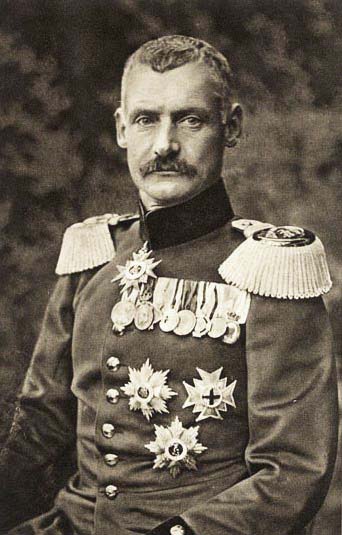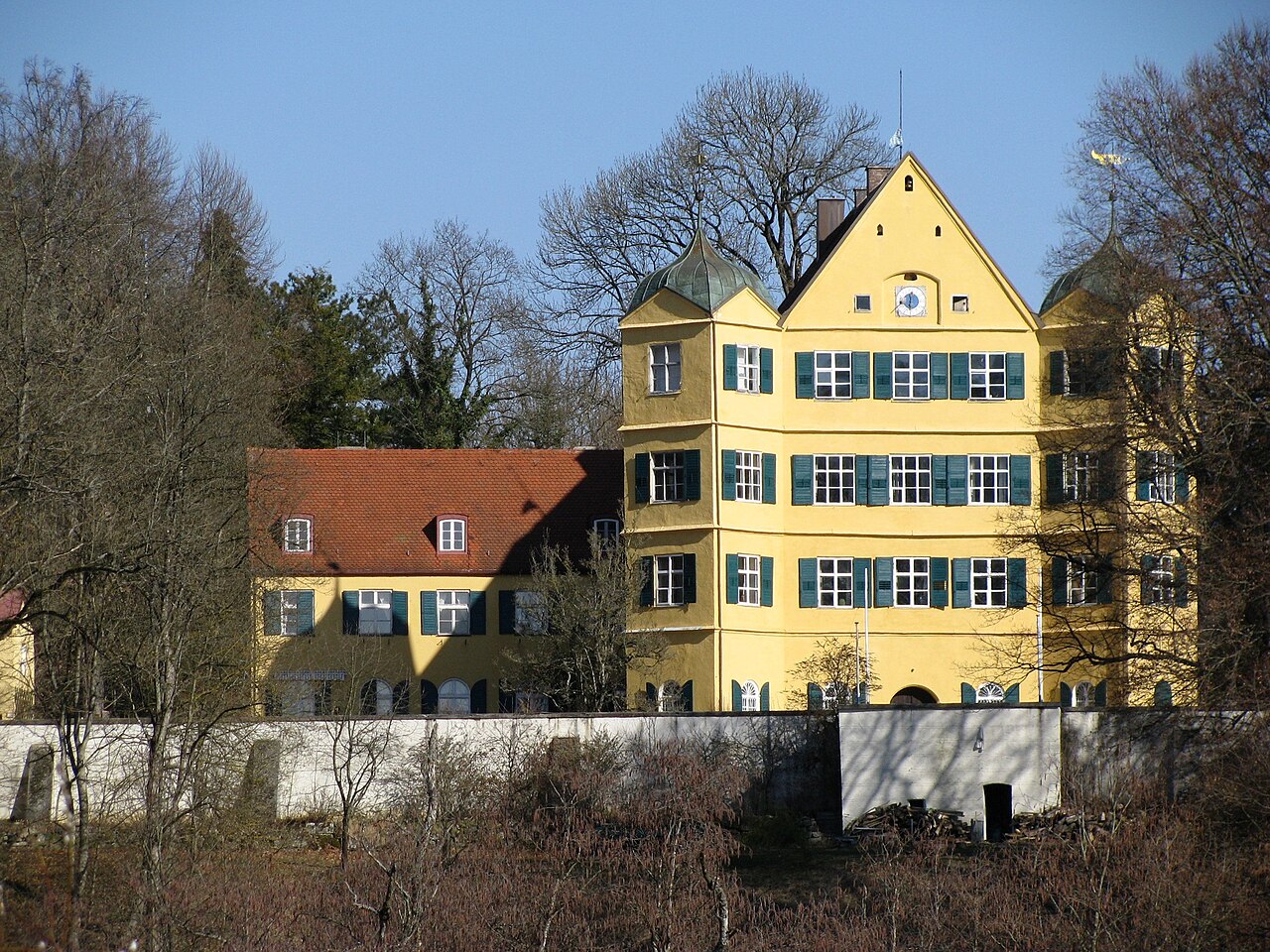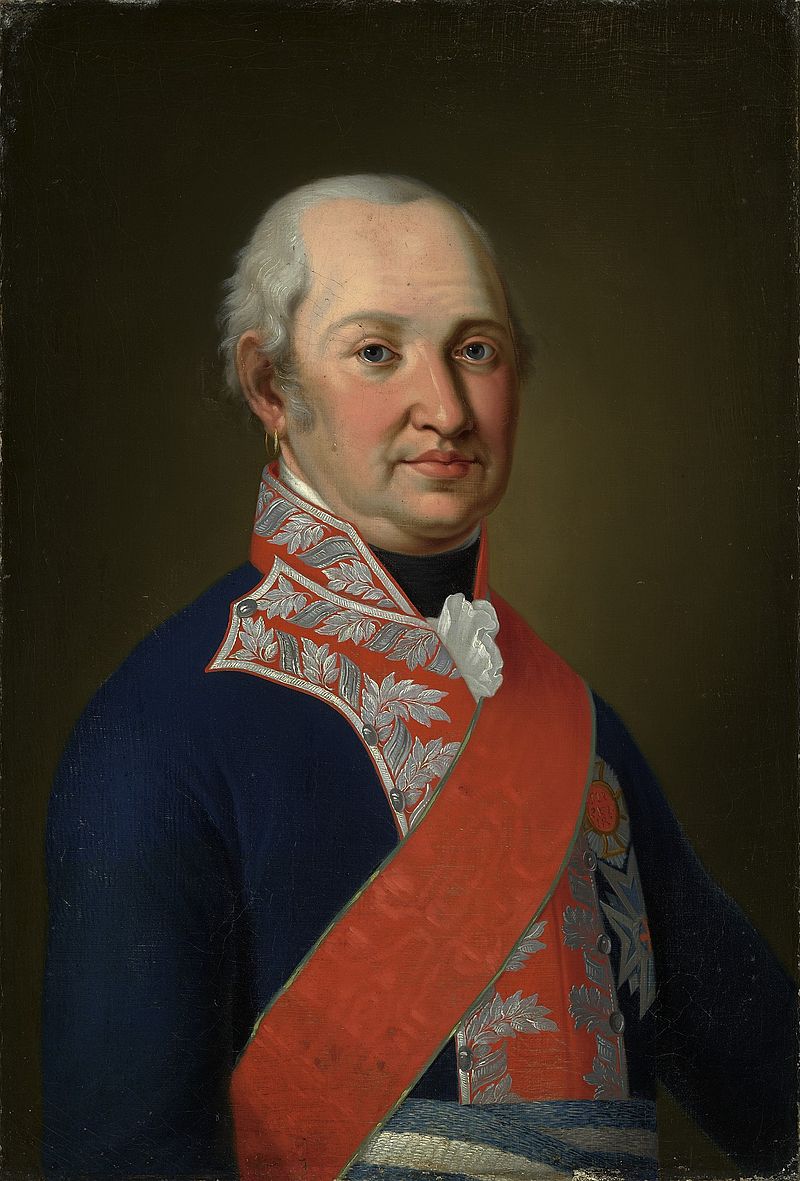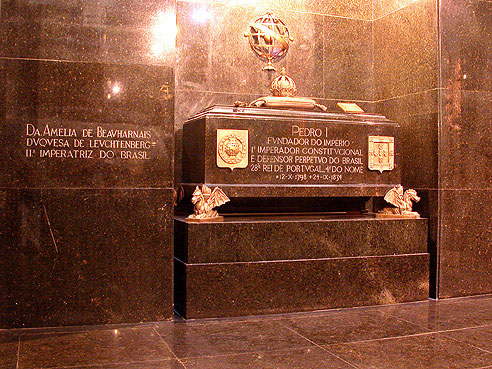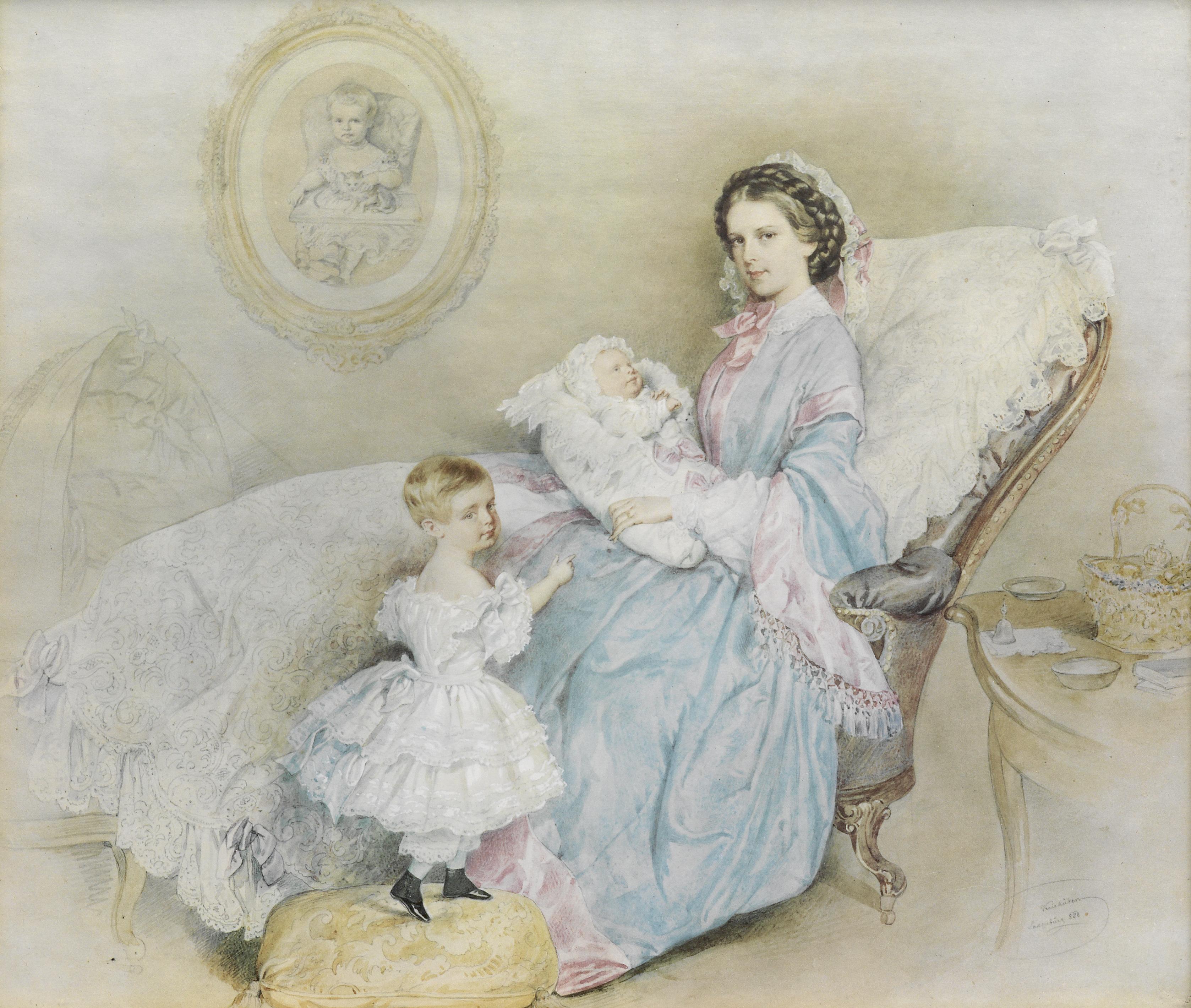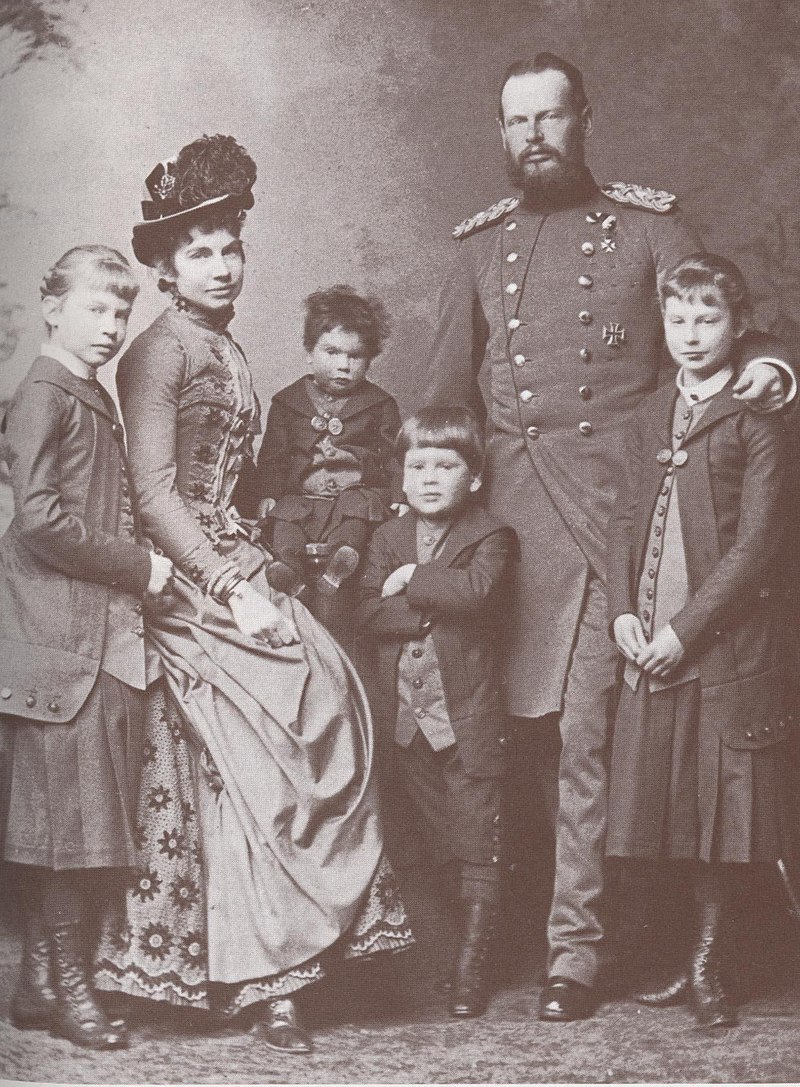by Susan Flantzer
© Unofficial Royalty 2021
The Kingdom of the Two Sicilies was located in today’s southern Italy. It included the island of Sicily and all of the Italian peninsula south of the Papal States. Ferdinando I, the first King of the Two Sicilies, had previously reigned over two kingdoms, as Ferdinando IV of the Kingdom of Naples and Ferdinando III of the Kingdom of Sicily. He had been deposed twice from the throne of Naples: once by the revolutionary Parthenopean Republic for six months in 1799 and again by Napoleon in 1805, before being restored in 1816 after the defeat of Napoleon. After the 1816 restoration, the two kingdoms were united into the Kingdom of the Two Sicilies.
Vittorio Emanuele II, King of Sardinia became a driving force behind the Italian unification movement along with Giuseppe Garibaldi, a general and nationalist, and Giuseppe Mazzini, a politician and journalist. Garibaldi conquered Naples and Sicily, the territories of the Kingdom of Two Sicilies. Francesco II, King of the Two Sicilies was deposed, the Kingdom of the Two Sicilies ceased to exist, and its territory was incorporated into the Kingdom of Sardinia. Eventually, the Sardinian troops occupied the central territories of the Italian peninsula, except Rome and part of Papal States. With all the newly acquired land, Vittorio Emanuele II was proclaimed the first King of the new, united Kingdom of Italy in 1861.
********************

Maria Sophie, Queen of the Two Sicilies; Credit – Wikipedia
Maria Sophie, Duchess in Bavaria was the wife of Francesco II, the last King of the Two Sicilies. Maria Sophie Amalie was born on October 4, 1841, at Possenhofen Castle in Possenhofen, Kingdom of Bavaria, now in the German state of Bavaria. She was the sixth of the nine children and the third of the five daughters of Maximilian Joseph, Duke in Bavaria and Princess Ludovika of Bavaria. Pius August, Duke in Bavaria and Princess Amélie Louise of Arenberg were her paternal grandparents. Her maternal grandparents were Maximilian I Joseph, King of Bavaria and his second wife Caroline of Baden. Maria Sophie was a younger sister of the more well-known Elisabeth, Duchess in Bavaria (Sisi) who married Franz Joseph, Emperor of Austria and was assassinated in 1898. The painting below is a group portrait of the siblings of Empress Elisabeth given to her by her brother Karl Theodor on the occasion of her wedding.

Maria Sophie with her siblings: (left to right) Sophie Charlotte, Maximilian Emanuel, Karl Theodor, Helene, Ludwig Wilhelm, Mathilde Ludovika, and Maria Sophie; Credit – Wikipedia
Maria Sophie had eight siblings:
- Ludwig Wilhelm, Duke in Bavaria (1831 – 1920), morganatically married Henriette Mendel, had two children
- Wilhelm Karl, Duke in Bavaria (1832 – 1833), died in infancy
- Helene, Duchess in Bavaria (1834 – 1890), married Maximilian Anton, Hereditary Prince of Thurn and Taxis, had four children
- Elisabeth, Duchess in Bavaria (Sisi) (1837 – 1898), married Franz Joseph, Emperor of Austria, had four children, assassinated
- Karl Theodor, Duke in Bavaria (1839 30 November 1909), (1) married Sophie of Saxony, had one daughter (2) Maria Josepha of Portugal, had five children including Elisabeth who married Albert I, King of the Belgians
- Mathilde Ludovika, Duchess in Bavaria (1843 – 1925), married Lodovico of Bourbon-Two Sicilies, Count of Trani, had one daughter
- Sophie Charlotte, Duchess in Bavaria (1847 – 1897), married Ferdinand Philippe Marie, Duke of Alençon, had two children, died in a fire at the Bazar de la Charité, an annual charity event in Paris
- Maximilian Emanuel, Duke in Bavaria (1849 – 1893), married Amalie of Saxe-Coburg and Gotha, had three sons
Maria Sophie’s father Maximilian Joseph was from a junior branch of the House of Wittelsbach. Maximilian Joseph did much to promote Bavarian folk music. He played the zither, which is the national instrument of Bavaria, and composed music for it. Although the family had a home in Munich, Herzog-Max-Palais (Duke Max Palace, link in German), Maria Sophie’s parents had no obligations with the Bavarian royal court and their nine children spent much time living a carefree, unstructured, unrestrained childhood at Possenhofen Castle on Lake Starnberg.

Maria Sophie’s husband Francesco II, King of the Two Sicilies; Credit – Wikipedia
In 1858, 16-year-old Maria Sophie of Bavaria was betrothed to 23-year-old Francesco, Duke of Calabria, the eldest son and heir of Ferdinando II, King of the Two Sicilies and his first wife Maria Cristina of Savoy. On January 8, 1859, a proxy marriage was held at the Court Church of All Saints in the Munich Residenz, the royal palace of the Bavarian monarchs. The couple married in person on February 5, 1859, in Bari, Kingdom of the Two Sicilies, now in Italy.
Three months after the marriage, Francesco’s father Ferdinando II, King of the Two Sicilies died on May 22, 1859, aged 49 from a strangulated hernia after hesitating for months to have surgery. Francesco began his two-year reign as King of the Two Sicilies and Maria Sophie became Queen of the Two Sicilies. During the reign of Francesco’s father, Ferdinando II, the Italian unification movement led by Vittorio Emanuele II, King of Sardinia, later Vittorio Emanuele I, King of Italy, and Giuseppe Garibaldi, a noted general and politician, began. Shortly before Ferdinando II’s death, the Second War of Italian Independence began. During the reign of Francesco II, Giuseppe Garibaldi’s 1860-1861 invasion called the Expedition of the Thousand led to the fall of the Kingdom of the Two Sicilies, which then was annexed to the new Kingdom of Italy in 1861, ending the reign of Francesco II, King of the Two Sicilies. After the loss of the throne of the Two Sicilies, Francesco and Maria Sophie lived in Rome as guests of Pope Pius IX. In 1870, the annexation of the Papal States to Italy, including Rome, forced Francesco and Maria Sophie to find refuge in Austria, France, and Bavaria.
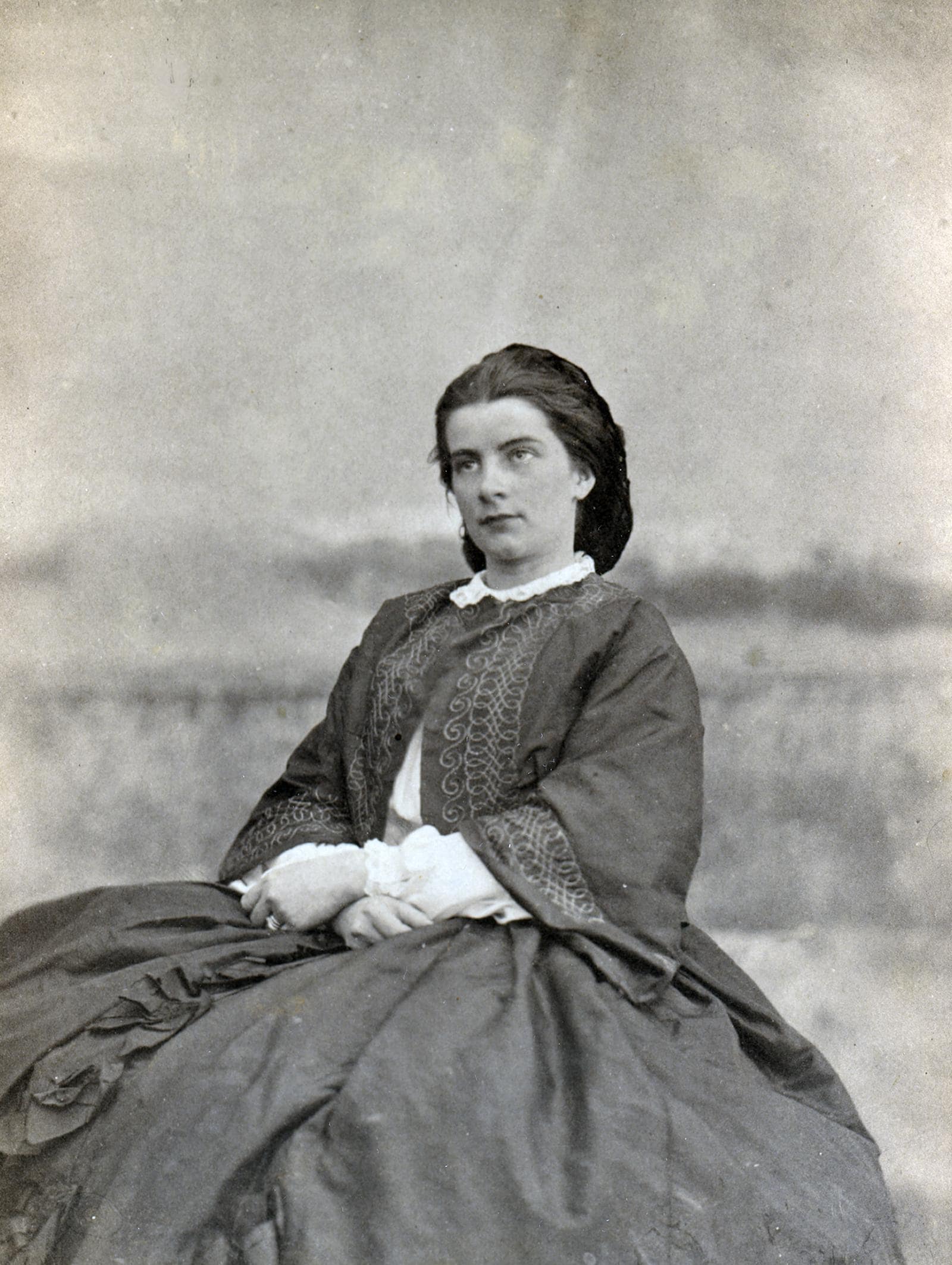
Maria Sophie in the 1860s; Credit – Wikipedia
Francesco had a congenital condition that prevented him from consummating his marriage. Maria Sophie, after having been patient for some time, began having affairs. While in Rome, Maria Sophie fell in love with Belgian Count Armand de Lawayss and became pregnant. To avoid scandal, the pregnancy was kept secret and Maria Sophie stayed at her parents’ home Possenhofen Castle in Bavaria. On November 24, 1862, Maria Sophie gave birth to a daughter at St. Ursula’s Convent in Augsburg, Kingdom of Bavaria. The child was immediately given to the family of the father. A year later, on the advice of her family, Maria Sophie decided to confess the affair to her husband. Subsequently, the relationship between Maria Sophie and Francesco improved, and after nearly ten years after his marriage, Francesco finally had surgery that corrected the condition. Maria Sofia became pregnant and a daughter was born to joyful parents but sadly, she lived for only three months. Francesco and Maria Sophie had no other children.
- Maria Cristina Pia of Bourbon-Two Sicilies (December 24, 1869 – March 28, 1870)

Garatshausen Castle; Credit – Von 2micha – Eigenes Werk, CC BY 3.0, https://commons.wikimedia.org/w/index.php?curid=8311631
In 1870, Maria Sophie purchased Garatshausen Castle (link in German) on Lake Starnberg in the Kingdom of Bavaria, now in the German state of Bavaria from her brother Ludwig Wilhelm, and the castle became their home. The former Francesco II, King of the Two Sicilies died on December 27, 1894, aged 58, in Arco, where he spent winters, then in Austria-Hungary, now in Italy. He was originally buried with his daughter at the Church of the Holy Spirit of the Neapolitans (link in Italian) in Rome.
After her husband’s death, Maria Sophie lived for a time in Munich, Kingdom of Bavaria, now in the German state of Bavaria. She also spent time in Paris, France where she lived in a house that her husband had purchased. There she presided over an informal Bourbon-Two Sicilies court in exile. Maria Sophie never stopped hoping that the former Kingdom of the Two Sicilies would be returned to her husband’s family. It was even rumored she was involved in the 1900 anarchist assassination of Umberto I, King of Italy in hopes of destabilizing the Kingdom of Italy.
During World War I, Maria Sophie was actively on the side of the German Empire and the Austro-Hungarian Empire in their war against the Kingdom of Italy. Again, some rumors claimed she participated in sabotage and espionage against Italy hoping that an Italian defeat would restore the Kingdom of the Two Sicilies. Despite her dislike of the Kingdom of Italy, Maria Sophie would anonymously visit Italian soldiers in prisoner-of-war camps in Germany, giving them books and food.

Coat of arms of the House of Bourbon-Two Sicilies on the entrance to the royal crypt at the Basilica of Santa Chiara; Credit – Di Giuseppe Guida – Flickr: Basilica di Santa Chiara., CC BY 2.0, https://commons.wikimedia.org/w/index.php?curid=20267754
After World War I, Maria Sophie returned to her birthplace of Bavaria, Germany, living in Munich. It is there that she died on January 19, 1925, at the age of 83. Maria Sophie was initially buried with her husband and daughter at the Church of the Holy Spirit of the Neapolitans (link in Italian) in Rome. In 1984, their remains were transferred to the Basilica of Santa Chiara in Naples, Italy, the traditional burial site of the House of Bourbon-Two Sicilies in Naples, Italy.
This article is the intellectual property of Unofficial Royalty and is NOT TO BE COPIED, EDITED, OR POSTED IN ANY FORM ON ANOTHER WEBSITE under any circumstances. It is permissible to use a link that directs to Unofficial Royalty.
Kingdom of the Two Sicilies Resources at Unofficial Royalty
Works Cited
- De.wikipedia.org. 2021. Marie in Bayern – Wikipedia. [online] Available at: <https://de.wikipedia.org/wiki/Marie_in_Bayern> [Accessed 18 August 2021].
- En.wikipedia.org. 2021. Duke Maximilian Joseph in Bavaria – Wikipedia. [online] Available at: <https://en.wikipedia.org/wiki/Duke_Maximilian_Joseph_in_Bavaria> [Accessed 18 August 2021].
- En.wikipedia.org. 2021. Maria Sophie of Bavaria – Wikipedia. [online] Available at: <https://en.wikipedia.org/wiki/Maria_Sophie_of_Bavaria> [Accessed 18 August 2021].
- Flantzer, Susan, 2021. Francesco II, King of the Two Sicilies. [online] Unofficial Royalty. Available at: <https://www.unofficialroyalty.com/francesco-ii-king-of-the-two-sicilies/> [Accessed 18 August 2021].
- It.wikipedia.org. 2021. Maria Cristina Pia di Borbone-Due Sicilie – Wikipedia. [online] Available at: <https://it.wikipedia.org/wiki/Maria_Cristina_Pia_di_Borbone-Due_Sicilie> [Accessed 16 August 2021].
- It.wikipedia.org. 2021. Maria Sofia di Baviera – Wikipedia. [online] Available at: <https://it.wikipedia.org/wiki/Maria_Sofia_di_Baviera> [Accessed 18 August 2021].



